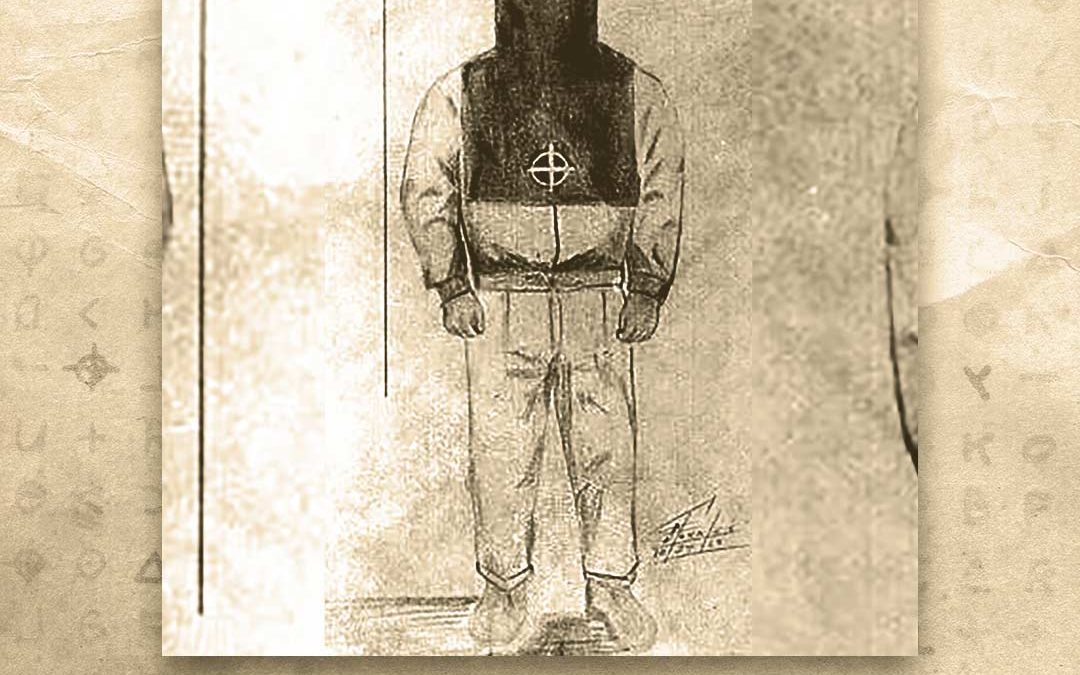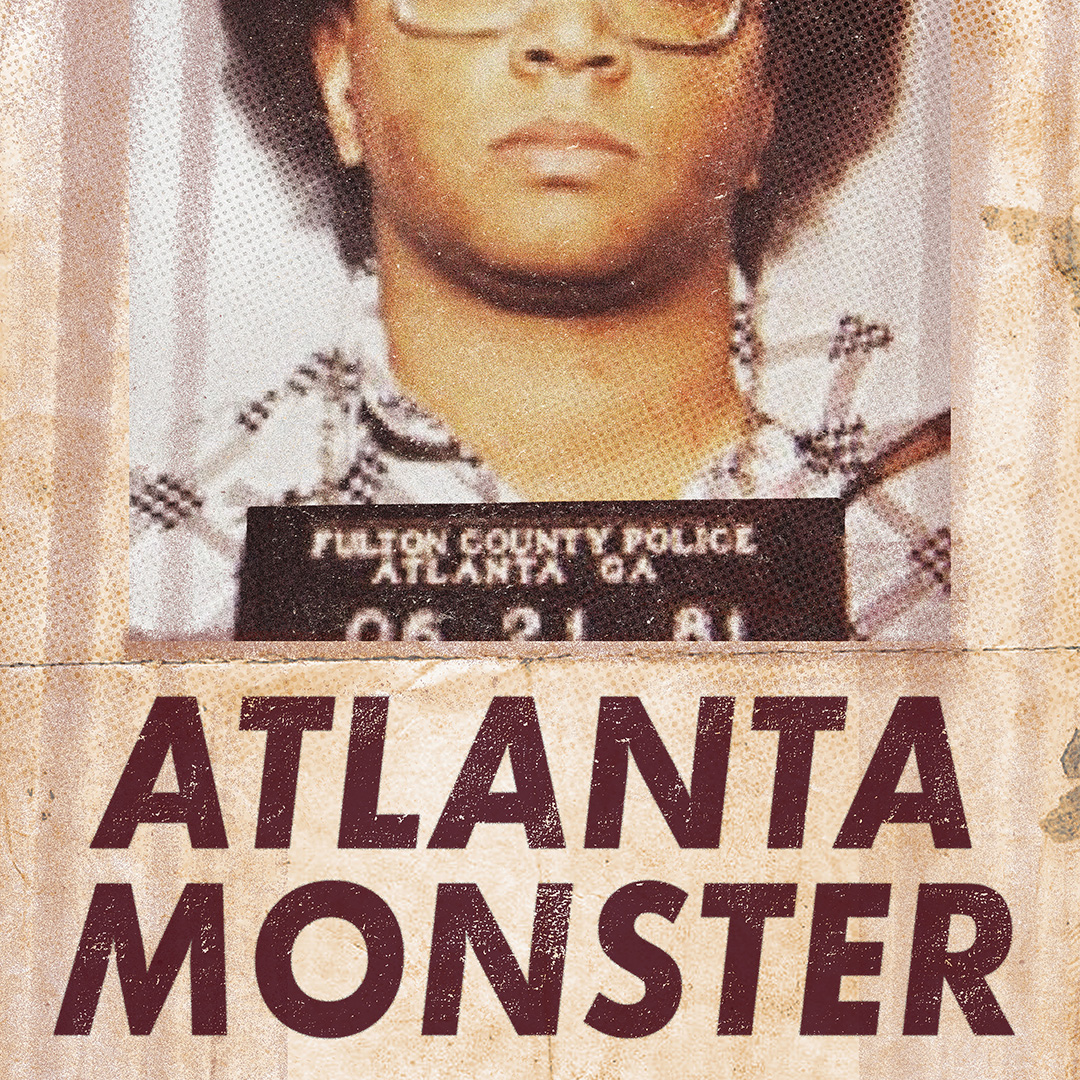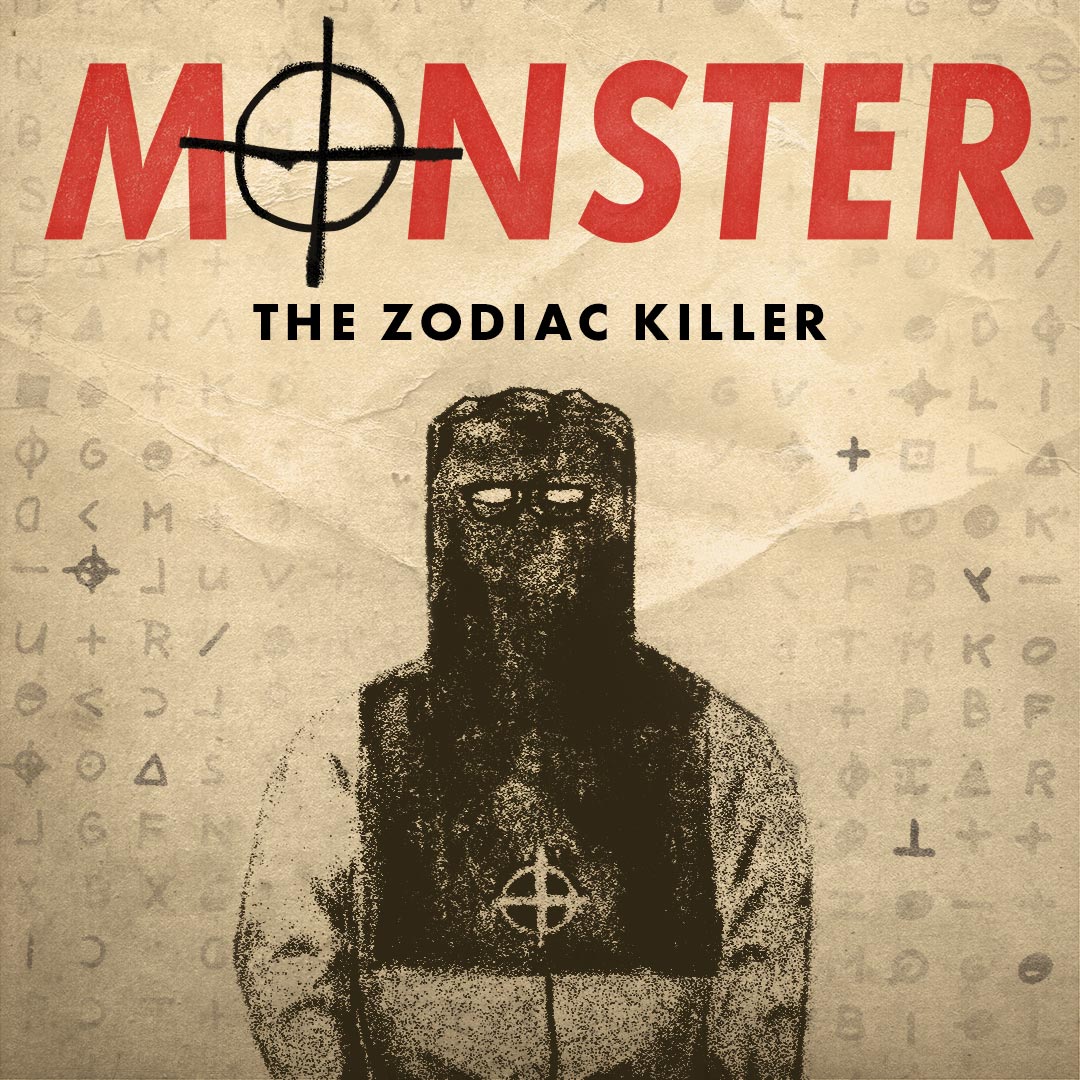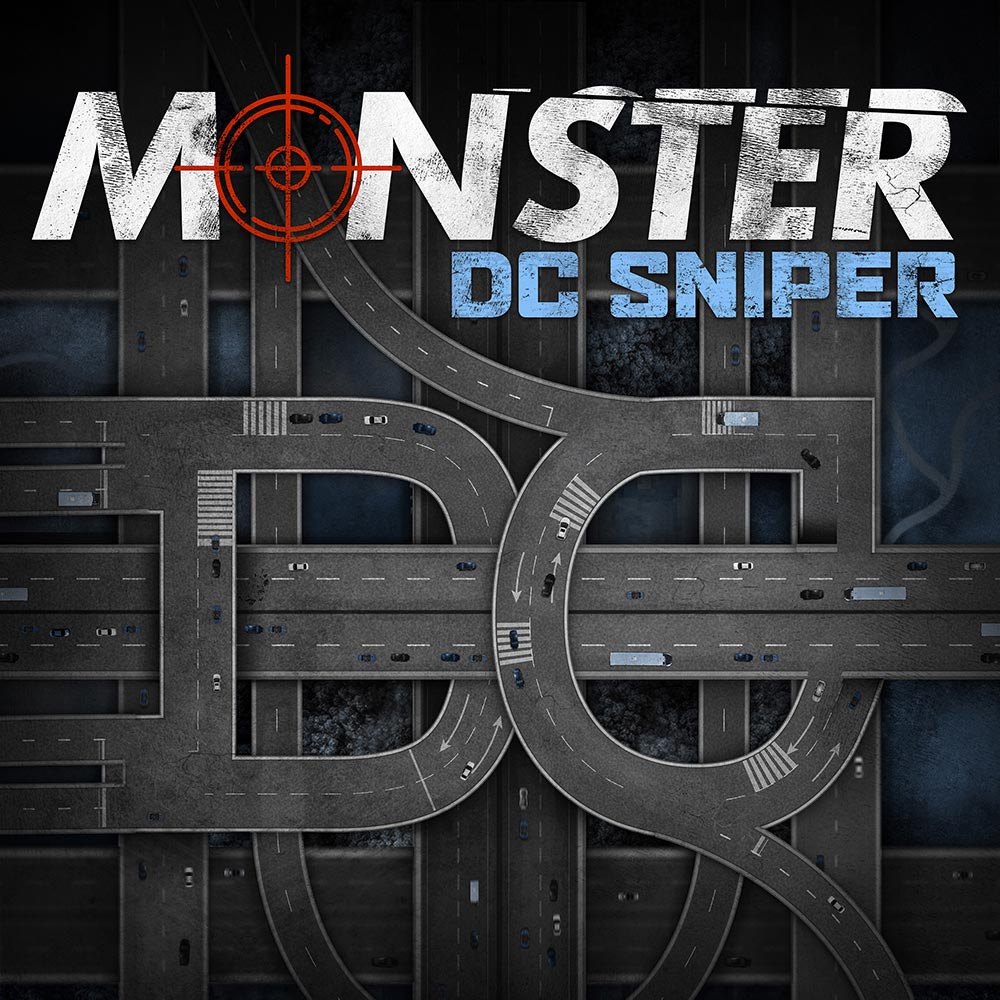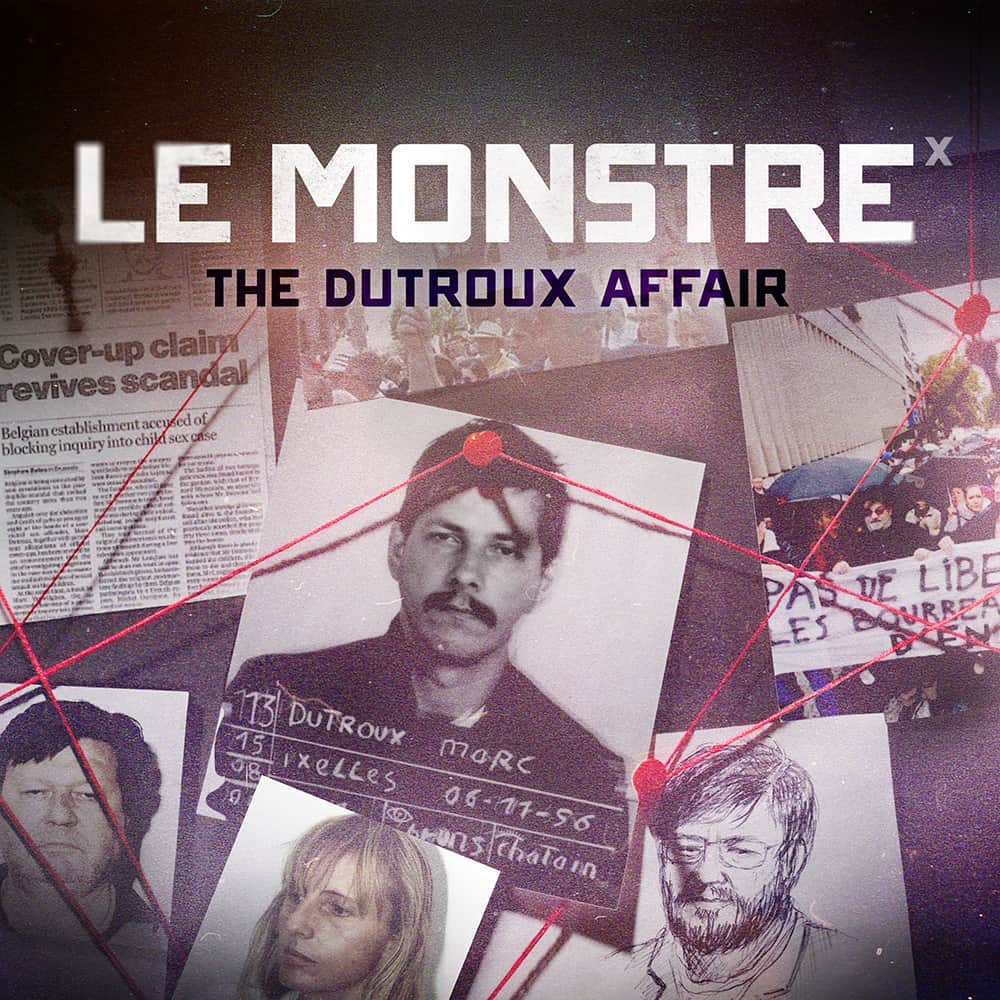4 • The Lake
Who is this man in a medieval mask?
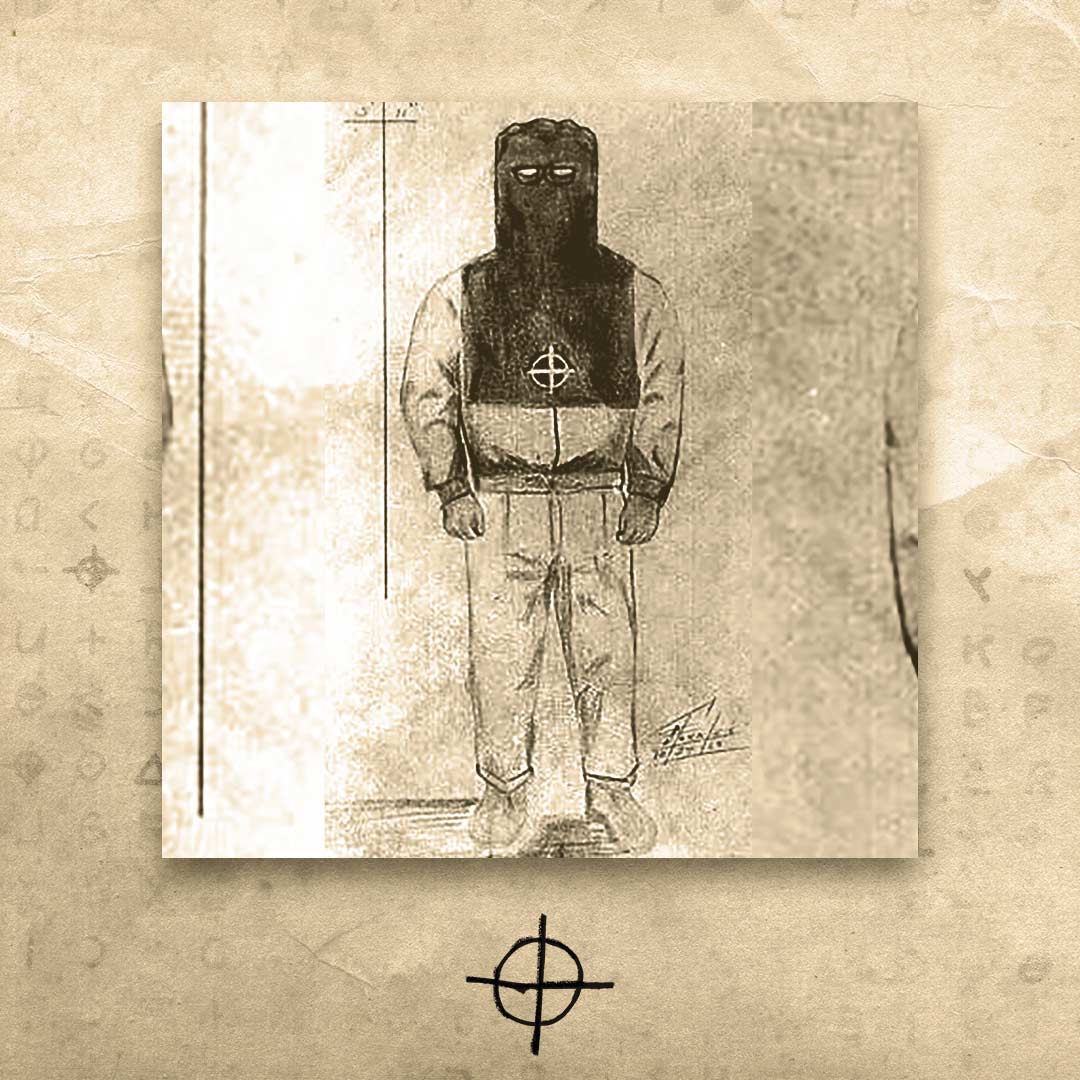
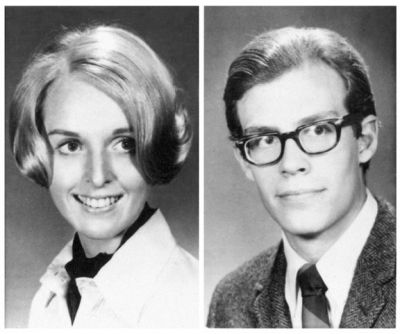
The shores of Lake Berryessa always felt like a safe place. Prior to September of 1969, there was no reason to think otherwise.
– Payne Lindsey, Host & Producer, Tenderfoot TV
I did think I was going to die. So, from that moment on, one has to have certain goals that you have to set. The first goal, of course, was to live.
– Bryan Hartnell, Zodiac victim at Lake Berryessa
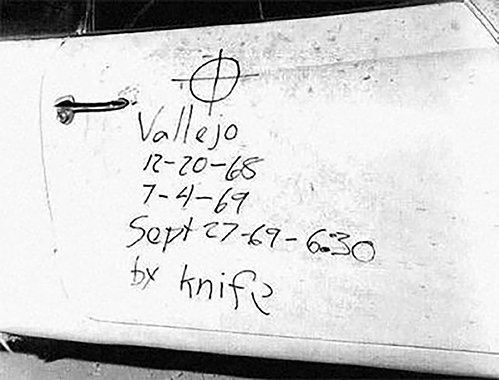
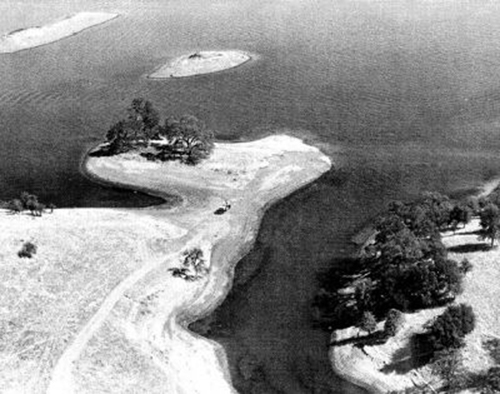
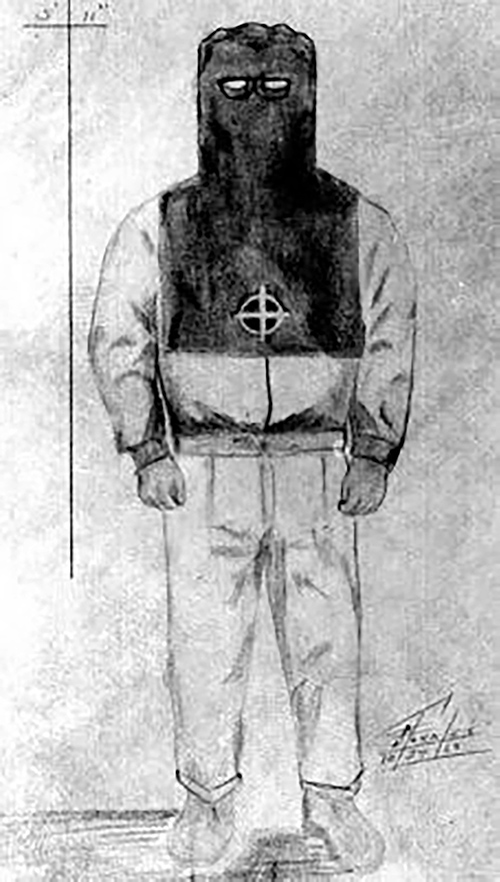
Bryan and Cecelia were struggling. With their wounds, they were bleeding profusely,
but they managed to free themselves.
Transcript
Speaker 2: This guy is a pathological psycho killer. There’s no doubt about it.
Speaker 3: Is there any doubt in your mind that there is or is not any connection between Vallejo and Lake Berryessa?
Speaker 2: This, I … we’re sifting out now. I wouldn’t say that there is any connection, yet I wouldn’t want to tell you that there isn’t at this time. We have some pretty good physical evidence that we’re working on now, and, of course, we’re gonna get together with the Vallejo authorities. We’ve been in contact with them since the incident, and we definitely will pool our resources.
Speaker 4: The shores of Lake Berryessa always felt like a safe place. Prior to September of 1969, there was no reason to think otherwise. Located about 80 miles north of the heart of the San Francisco, it was quiet. It was remote. It was the perfect place to spend a lazy afternoon swimming, playing in the tall grass, or just relaxing on a blanket on the water’s edge. Unfortunately, all the qualities that made it an ideal getaway also made it the perfect place for other darker pursuits.
Speaker 4: We’re standing on a peninsula at Lake Berryessa. In this exact spot, Bryan Hartnell and Cecelia Shepard were attacked in 1969.
continue reading
Speaker 5: There’s no boats. There’s no planes. All you hear is birds in the background.
Speaker 5: I can’t believe it, but there’s actually a couple down by the shore on the actual island, and they’re the only people we see here. I mean, you can’t even make this stuff up. I think we should go down and talk to them.
Speaker 5: You came here knowing what was here. What’s here?
Speaker 7: Oh, it’s the same month.
Speaker 6: Yeah. It’s where the Zodiac Killer killed that guy and that one girl, right?
Speaker 5: Yeah.
Speaker 6: Yeah.
Speaker 7: Didn’t one of them get away?
Speaker 6: One of them lived, and then one of them died. The girl died in the hospital, I think. Right? Well, that’s kind of crazy. Whenever we drive here, I’m like, “Wow. He drove the same exact way just to get here and do that.” It’s crazy to think about.
Speaker 5: It’s very peaceful out here.
Speaker 6: It is.
Speaker 7: It doesn’t seem like the place you would get killed at, right?
Speaker 6: It probably ruined the whole lake thing for you.
Speaker 8: A man in a mask robbed, tied, and stabbed them, leaving them for dead.
Speaker 9: Subject stated, “I want to report a murder. No, a double murder. I did it.”
Speaker 10: A man who wore a medieval-style executioner’s hood carried a knife and gun, and intended to use them.
Speaker 11: They haven’t arrested me because they can’t prove a thing. I’m not the damn Zodiac.
Speaker 12: Who is the Zodiac, and where is he?
Speaker 4: From iHeartRadio, HowStuffWorks, and Tenderfoot TV, this is Monster: The Zodiac Killer.
Speaker 13: Dear Editor, this is the Zodiac speaking. In answer to your asking for more details about the good times I have had in Vallejo, I shall be very happy to supply even more material. The boy was originally sitting in the front seat when I began firing. When I fired the first shot at his head, he leaped backwards at the same time, thus spoiling my aim. He ended up on the back seat, then the floor in back, thrashing out very violently with his legs. That’s how I shot him in the knee. I did not leave the scene of the killing with squealing tires and racing engine as described in the Vallejo paper. I drove away quite slowly so as not to-
Speaker 4: It was late September 1969, and most, if not all, of the residents of the nearby Bay Area, were well aware of a killer operating on the outskirts. Now, the killer had a name. In September of 1969, Napa County was still a place for relaxation and enjoyment.
Speaker 14: On September 27, 1969, a college student, Cecelia Shepard, and Bryan Hartnell decided to go to Lake Berryessa to spend some time together. They had dated in the years prior, and they were still friends. They wanted to go out to Lake Berryessa, which is an absolutely beautiful location north of Napa, California. It’s a massive body of water. It’s a manmade lake. Green hills, green trees everywhere, lots of foliage. Beautiful sunsets there reflected on the water. It’s an amazing place to be. If you drive around the lake and look around, you’ll be amazed by how beautiful that area is. Then instantly, you will think, what kind of person looks at this as a setting for a brutal crime?
Speaker 4: The events in Napa County would be different. The Zodiac was becoming more bold, emerging from the shadows.
Speaker 10: Early last Saturday evening, Celia Shepard and Bryan Hartnell, both in their early twenties, were sitting on this knoll of land overlooking part of Lake Berryessa. They thought they were alone, but there was a third man on this knoll, a man who wore a medieval-style executioner’s hood, carried and knife and gun, and intended to use them.
Speaker 14: Bryan and Cecelia decided to sit out on the banks and talk and whatever. At a certain point, Cecelia noticed a man up in the trees. She commented to Bryan that there was a man up there. Bryan thought, “Oh, well, it’s no big deal. He might just be doing whatever.” But then the man got closer. At a certain point, he donned a costume, and then he stepped out and approached the victims. This costume was dark with four corners on the top. Made it look a little bit like a paper bag covered with fabric over his head. There was a chest piece that came down over his chest with a white crossed circle on it, which is the same symbol that he had used in his previous letters.
Speaker 14: He approached the victims at gunpoint, and he said that he was an escaped convict from a prison, either in Montana or Colorado. We’re not sure what he actually said, but that he needed their car keys and money to escape to Mexico. Bryan and Cecelia thought they were just being robbed. Although Bryan at one point said that he thought he could’ve gotten the gun away from the man, he was worried that something might happen, that the man might shoot them or something, so he thought, “We’ll just cooperate and get through this, and it’ll be over.”
Speaker 14: The Zodiac said he needed to tie them up, and he provided some pre-cut lengths of plastic clothesline cording. He had Cecelia tie Bryan, and then he tied her up. Once they were laying on the ground, I guess Bryan Hartnell said to the man, “Is that gun really loaded?” The man opened the gun and showed him, yes, there were bullets in there. Then out of nowhere, the man started stabbing Bryan Hartnell in the back with a foot-long knife. Apparently, he stabbed Bryan Hartnell at least six times. Bryan Hartnell decided that it was best to pretend to be dead, so he just stopped moving. That apparently satisfied the killer, which is another indication of what his motives were. As soon as Bryan stopped moving, he moved on to Cecelia.
Speaker 14: Now, unfortunately, as Bryan described to me, Cecelia had to watch Bryan be stabbed. Because of that, she was even more frightened when the man turned on her. Unlike Bryan, she fought back. Because of that, she was stabbed many more times. She was stabbed 10 times in the front and in the back. Then the killer appeared to be satiated. He stood up, walked away. He walked up the hill to where Bryan Hartnell’s white Karmann Ghia was parked. He took out a marker, and he left a message on the car door. It was a crossed circle symbol. Below that were the dates 12/20/68 and 7/4/69, which were the dates of the murders on Lake Herman Road and the shooting at Blue Rock Springs Park. Then it said “Sept,” for the month of September, “27-69-6:30 by knife.”
Speaker 14: Bryan and Cecelia were struggling. With their wounds, they were bleeding profusely, but they managed to free themselves. Bryan tried to crawl off to get help. A fisherman came by with his son in a boat and saw the victims and went off to get help. A park ranger and others returned later and waited with the victims until the ambulance arrived.
Speaker 15: Him and I arrived on the scene that Saturday night around 7:13. We had found this young girl laying on the shoreline here, all stabbed in several places. Her boyfriend [inaudible] had came to from … He had been stabbed, and he had taken off for help. The other patrolman came in, which is Dennis Land. He found him some hundred yards from here, passed out, so he brought him back to the scene of the … where the girl was.
Speaker 15: I’ve had 11 years patrolling this lake, and I’ve seen a lot of people cut up by boat accidents and this, but this is one of the worst things I ever witnessed, for no reason at all. Just a hooded man came up with a pistol drawn on them. He tied them up and then just told them he had to kill them.
Speaker 4: Cecelia Shepard initially survived the attack but slipped into a coma on her way to the hospital and died two days later on Monday, September 29, 1969. Bryan Hartnell survived.
Speaker 4: Bryan, in an interview from his hospital bed, describes how he found the strength to live that night.
Bryan Hartnell: At the beginning, I did think I was going to die. So, from that moment on, one has to have certain goals that you have to set. The first goal, of course, was to live. I suppose the second goal was to get untied. The next one was to get help. From getting help, getting to the hospital. You know, you have to have a successive set of goals. If you can keep those going and you can keep your mind active, you … I don’t … whether you die or not, you’re at least psychologically attuned, whether you’re in shock or not. If you can keep arguing with yourself, praying, doing anything to keep your mind off of yourself, or at least just not lapsing back and just saying, “Well, it’s no use.”
Dave Monsees: Bryan will probably be able to leave Queen of the Valley Hospital fairly soon, but where he’s going from here is being kept secret in the event that the man who attacked him and killed Cecelia Shepard on Lake Berryessa a week ago Saturday tries again.
Dave Monsees: Bryan made it for two reasons some people might regard as intangibles, but reasons that for him were enough: a strong faith and an equally strong will to live. Dave Monsees, Eyewitness News, at Queen of the Valley Hospital in Napa.
Speaker 4: Because he survived, Bryan Hartnell was able to help the investigators by providing detailed descriptions of the Zodiac’s elaborate costume and the way he spoke to the couple before the attack.
Speaker 14: In the hospital, Bryan was interviewed and described the killer, described the exchange they had, the conversation they had had, and he also described the killer’s costume in great detail. Unfortunately, Bryan could not see the killer’s face, but he could describe the killer’s voice. He thought that the killer seemed like a younger person, maybe a student and that he appeared to have some kind of a drawl — not a Southern drawl, but some form of an accent. Cecelia, when she had seen the man before he put on the mask, thought that he had dark hair. Then when he was wearing the costume, there’s some evidence that Bryan could see some of the hair through the eye holes in the costume and thought that the man had greasy brown hair, which was in some ways compatible with the previous description given by Michael Mageau; but of course without seeing his face, you couldn’t say for sure.
Speaker 4: Bryan was fortunate to survive, but there’s another side to the story that most people don’t consider: survivor’s guilt.
Speaker 14: In 1999, I spoke with Bryan Hartnell. He told me some things about that day which put a lot of things in context. He did talk about his desire to take the gun away from the man and then wrestling with the fear that doing so might make matters worse and that he might endanger Cecelia. That was a tremendous responsibility, a burden, to be carrying, because as the man, especially in 1969, you’re expected to protect the woman. Put yourself in Bryan’s position. You’re there with a woman that you care about, and a man walks up with a gun and says he’s just going to rob you. Part of you wants to fight back, but part of you is worried that you’re going to make things worse and get somebody hurt. I do know that he did feel some responsibility for what happened to her.
Speaker 14: He also talked about the fact that their faith helped them get through this. After the killer left and they were sitting there bleeding and trying to get out of their bindings, they prayed together. They said that that helped them get through the ordeal.
Speaker 14: Bryan crawled out onto the road. He was bleeding so profusely that if the ambulance probably had not come when it did, there’s a good chance that he might not have survived. He told me that the knife came very close to his heart. Just an inch in another direction and Bryan probably would have died that day, and we would’ve never heard anything about this story.
Speaker 14: But he also struggled with the fact that later on, he had to think about the conversation he had with the Zodiac, where the Zodiac was basically telling him, “I’m just going to rob you.” Bryan thought, “Well, maybe with my legal experience” … He was a law student. “Maybe I could help this man. Maybe I could talk to him.” He offered to help him get some help. Of course, the Zodiac wasn’t interested in any of that because it was all a ruse. He was just trying to get them to cooperate so he could get them tied up. He had apparently created this scenario where he was going to use this ruse to convince them everything’s okay. “Cooperate with me, and everything will be fine.” That’s one of the most terrifying aspects of that. He actually got them to participate in their own attack by convincing them, “This is the best thing for you to do,” when he knew all along what he was going to do to them. This was not something that he just did on a spur of the moment once they were tied up. He tied them up for the specific purpose so they could not fight back. You believe somebody when they tell you, “I just want to take your money,” so you say, “Okay. All right. You can tie me up.” Then once that’s done, you have no choice. It’s over.
Speaker 14: Bryan was very lucky that he survived, but I think, like a lot of other people, he also still struggles with some guilt because he was the person who survived. He decided to play dead, and that appears to have made the big difference in why he’s still here today. Cecelia did what many of us would’ve done, which was fight for her life, and apparently, she paid the price for that.
Speaker 4: And as it turns out, Zodiac was selective when choosing his victims on that day at the lake.
Speaker 14: It was probably easier to escape that area during the day than it would’ve been at night. If you’ve ever been to Lake Berryessa, there’s lots of winding roads. It was even more so back in 1969 when those roads weren’t paved, and there were little dirt trails and things like that. He may have been familiar with that area and selected that spot specifically, but there’s no guarantee there would be somebody there. That might also explain why some witnesses saw a man walking around the area, just randomly looking at people, staring at them, because he may have been considering killing those people as well.
Speaker 14: There were three young girls who I believe were sunbathing in an area of the lake who said a man was staring at them. If that was the Zodiac, you have to stop to think about what was going on. Was he looking at those people because he was trying to make sure they wouldn’t pay any attention if he attacked someone else, or was he considering attacking those three girls? What’s even more terrifying is that there was a man and his young son who said that they saw a similar individual. Was that guy stalking them and considering attacking a father and son? Why didn’t he? Did he become concerned that someone might see him, or did he notice that they had guns? Because they were … Apparently, there were some people in the area who were hunting and target shooting and stuff so he may have said, “I don’t want to risk somebody who’s armed.” Maybe he decided not to … He didn’t want to kill a little boy. I don’t know, but it does indicate that he was entertaining a lot of different possibilities that day, and that’s a drastic departure from what he had done before.
Speaker 4: Was the Zodiac killing strictly for attention? He did seem proud of his kills, bragging about them in a very public way, but why such a dramatic turn of events at Lake Berryessa? The killer had changed his method of operation from shooting to knife attack. Dr. Eric Hickey, criminal psychologist at Walden University and consultant for the U.S. Department of Defense, thinks it was all about progression, going from the somewhat detached method of killing with a gun to the more up close and personal method of ending a life with a blade.
Eric Hickey: I don’t think that the Zodiac really cared whether he was caught or not, but I think he liked the game. I think when he went from shooting to stabbing, shooting was just too easy. It was too quick, but stabbing? Much more sadistic. I think he took probably some delight in doing that. We’ll see some of these guys … We don’t know about some of them. We don’t know exactly what Ted Bundy did to his victims. We’ve only heard some things because he did it out in the woods. I’m sure that he made them suffer a great deal, but we don’t know if it was progression with him or not.
Speaker 14: It’s one thing to just walk up and stab people, but if you think about somebody like Ted Bundy, he could’ve just as easily walked up and hit a woman over the head with a crowbar and threw her in the trunk and driven off; but there was some part of him that needed to lure them and fool them into a false sense of security so that then he could turn around and spring it on them as a surprise. He needed to surprise women, and he needed this fooling them aspect for him to feel powerful. Well, there may have been with the Zodiac some element where he wasn’t satisfied anymore just shooting people.
Speaker 4: Was he moving from sudden blind attacks to a much more controlled, ritualistic, or even sexual form of killing? The killer’s carefully crafted costume, complete with the hand-stitched Zodiac symbol, may hold a clue. The bizarre costume he designed and then wore for the Lake Berryessa attack still puzzles authorities and captivates the imagination of anyone who sees the police sketch. Even now, 50 years later, the Zodiac’s strange costume raises questions.
Speaker 14: At Lake Berryessa, he shows up with a bizarre costume with his chosen symbol on the chest, a bizarre story about how he had escaped from a prison, and he needed their money and car keys to escape to Mexico, none of which appears to have been true. We know that the story wasn’t concocted just to put them at ease because he could’ve said anything to put them at ease. Then you have to deal with the costume itself. Ken Narlow, who investigated the case for the Napa County Sheriff’s Office, said to me once, “Why is he wearing a mask? What’s the point? If you’re going to kill these people, why are you covering your face?” There’s no evidence he did that in the previous crimes. Then at the same time, if he wants to cover his face, why isn’t he just wearing a ski mask or something? Why this elaborate costume? Even more importantly, if he was going to kill the victims … As far as we know, if help hadn’t arrived when it did, it’s very possible those victims could have died. If they had died, none of us would ever know that the Zodiac had worn that costume.
Speaker 14: That costume was not about getting attention. It was not about seeing it in the media or seeing those famous sketches of that costume now. He didn’t appear to care whether we knew about that or not. That was for him, and it was for the victims. The only reason we know about it is because Bryan Hartnell survived to tell us what happened; but if he had died, as far as we know, they had just been stabbed. This whole thing about the costume and the story, that’s all some private thing that serves some inner need for the Zodiac that we don’t really understand. But what I think it does tell you is that he had a very rich imagination, rich fantasy life, and he needed to feel a certain sense of power when he committed these crimes, more so than what would be provided if he just walked up and shot you.
Speaker 14: It’s obviously by that time, whether it was because of the media coverage or his own need to be more than what he seemed to be, he had created this image. Then that image had to be sustained with something. It couldn’t just be writing letters. I think in some way, as much as he didn’t make any effort to make sure we knew about his costume, that wasn’t the point. It was about him knowing about that costume, knowing that he has morphed, transformed, into this new kind of thing and then inflicting it on someone; because I think ultimately, as much as that costume was meant to feed his ego or his fantasies, it was also about the terror it would create in those who saw him coming wearing that costume.
Speaker 4: The Zodiac had taken on the image of what he felt would instill the most fear in his victims, but the question remains: Did he create and wear this elaborate, ritualistic costume for the benefit of himself or for his unfortunate victims? If there was no one left living after the Lake Berryessa attack, no one would’ve ever known of his bizarre ritual, and he certainly didn’t expect any survivors. We know this because of a phone call made to the Napa County Sheriff’s Department from a payphone outside of a car wash, 27 miles away from the crime scene, that proves just that.
Speaker 13: “I want to report a murder. No, a double murder. They are two miles north of Park Headquarters. They were in a white Volkswagen Karmann Ghia. I’m the one that did it.”
Speaker 4: Whatever his motive, the Zodiac was clearly done operating in the shadows. He was now ready to take his crimes to a larger venue, somewhere he could really grab the attention of the police and the public. Just two weeks after the Lake Berryessa attack, in early October of 1969, the Zodiac would bring his own brand of terror into the heart of San Francisco.
Speaker 4: Next time on Monster: The Zodiac Killer.
Speaker 19: He was just a kid. He was a kid, and he was just playing downstairs. He just, you know, looked outside the window and saw a yellow cab and saw someone slouched over in the car, come to find it was culprit of the Zodiac.
Speaker 14: San Francisco is directly linked to the Zodiac Killer. There’s no escaping it. Now, what he wanted in July of 1969 was for as many people to see this as possible, to get as much attention as possible, and to cement his image as a real threat.
Speaker 20: I’ve covered a lot of killers with a lot higher body counts and a lot more sick, twisted ways of killing people; but this guy was theatrical.
Speaker 21: The Chronicle received a letter, and only The Chronicle, from the Zodiac. As the woman opened it in the editorial department, a piece of bloody shirt fell out with the letter.
Speaker 4: Monster: The Zodiac Killer is a 15-episode podcast produced by iHeartRadio, HowStuffWorks, and Tenderfoot TV. Donald Albright and I are executive producers on behalf of Tenderfoot TV, alongside producers Meredith Stedman, Mason Lindsey, Christina Dana. Jason Hoch is executive producer on behalf of HowStuffWorks, along with producers Trevor Young, Miranda Hawkins, Ben Kuebrich, and Josh Thane. Scott Benjamin provides additional voice talent. Matt Frederick is our host. Original music is by Makeup and Vanity Set.
Speaker 4: If you haven’t already, make sure to check out the first season Monster, called Atlanta Monster, about the Atlanta child murders in the late ’70s to the early ’80s. Download the 10-episode season right now.
Speaker 4: Have questions or comments? Email us at monster@howstuffworks.com, or you can call us at 1-833-285-6667. Thanks for listening.
Episodes
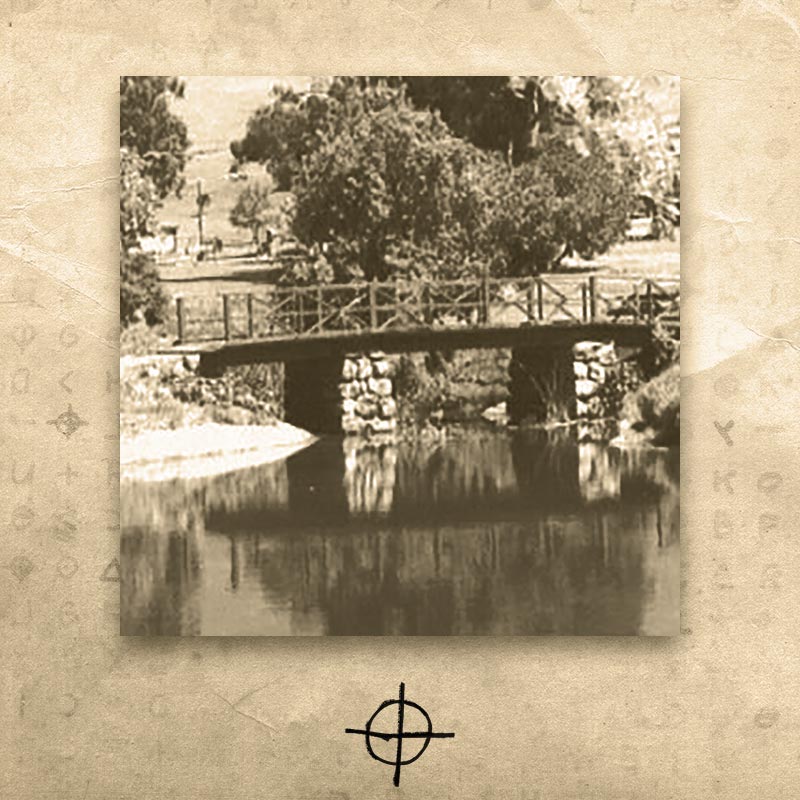
5 · Taxi Driver
Zodiac moves to the City by the Bay.
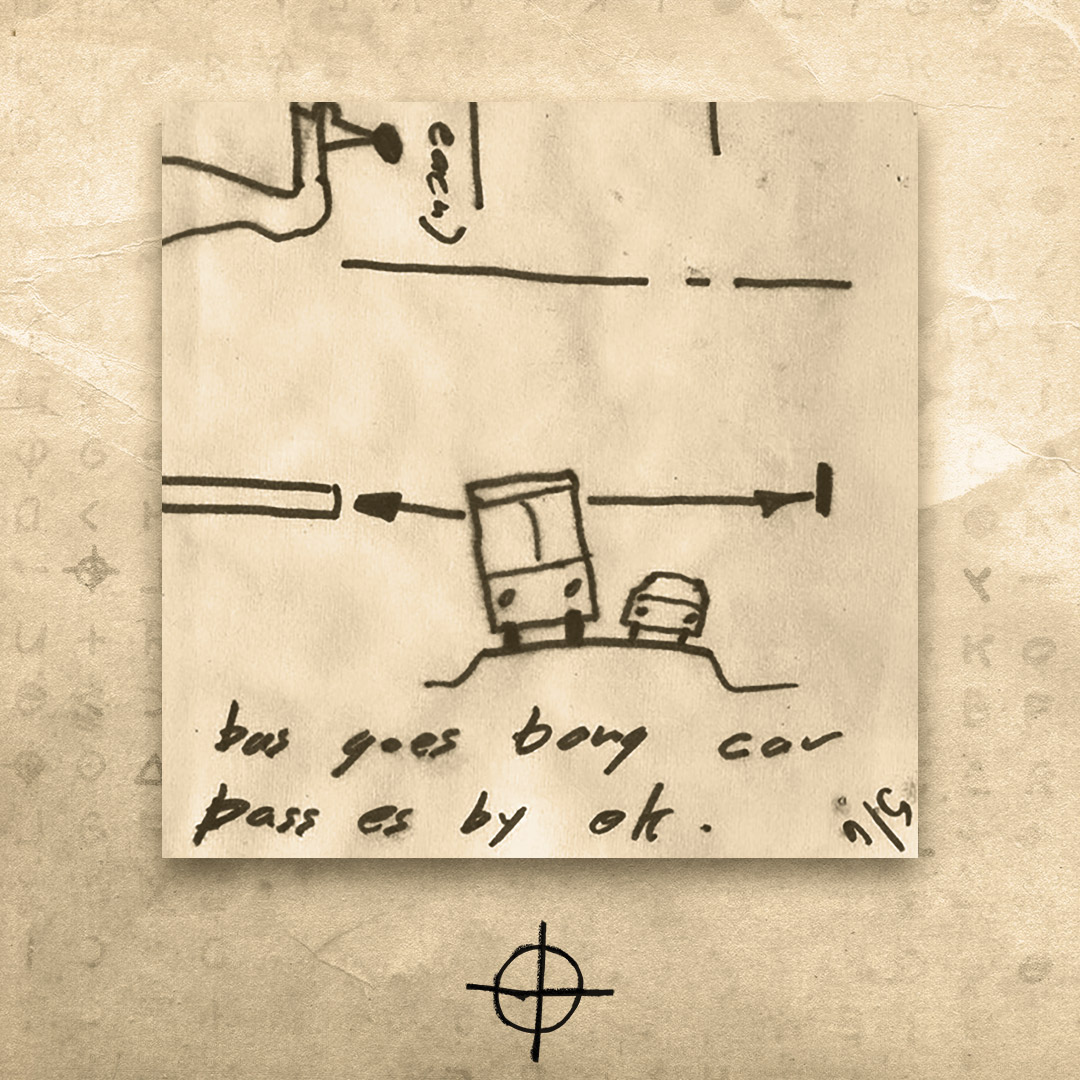
6 · School Bus
Zodiac is making threats which now target children. And he says he’s making a bomb.
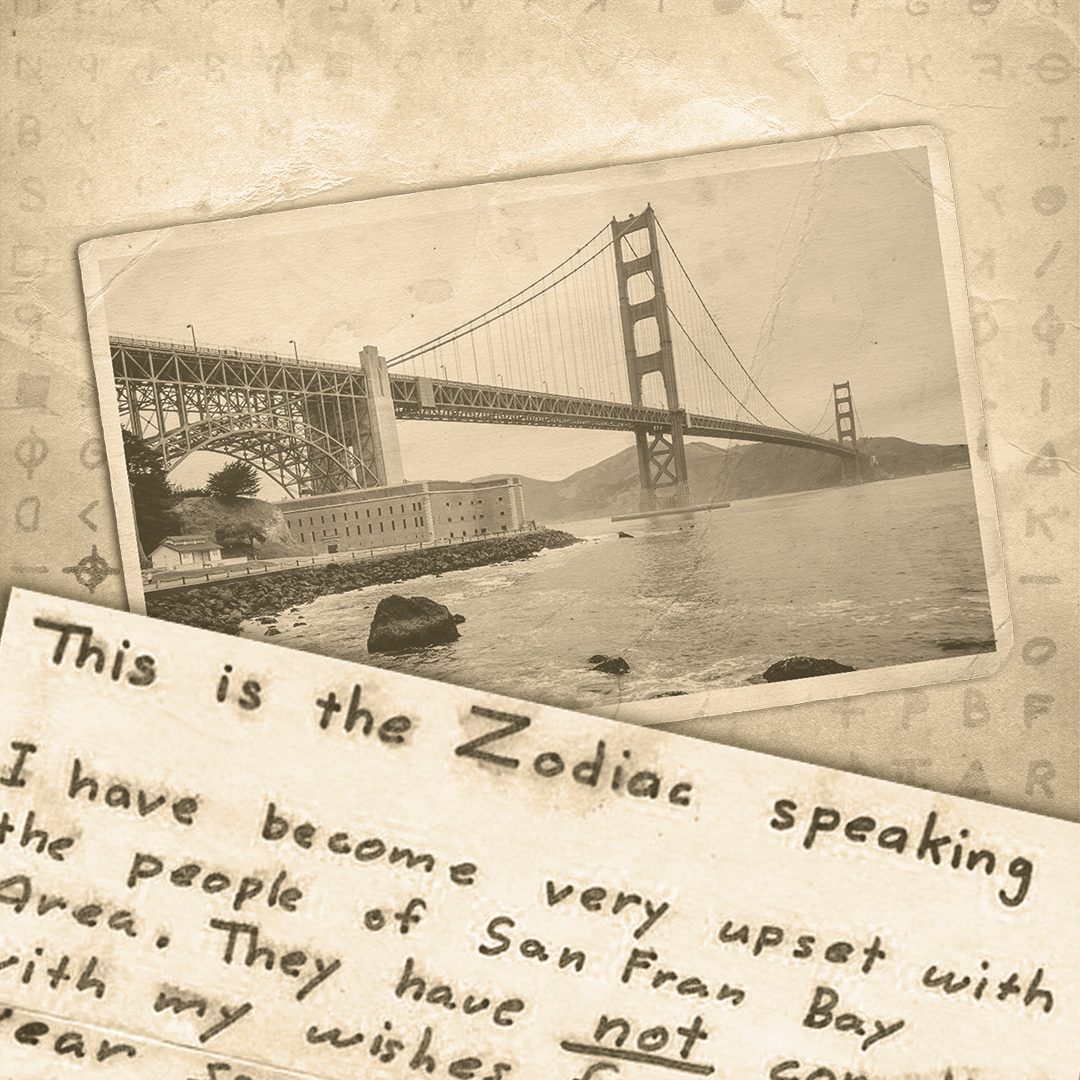
7 · Prime Time
After an impromptu TV appearance, the Zodiac fights to stay in the limelight.
